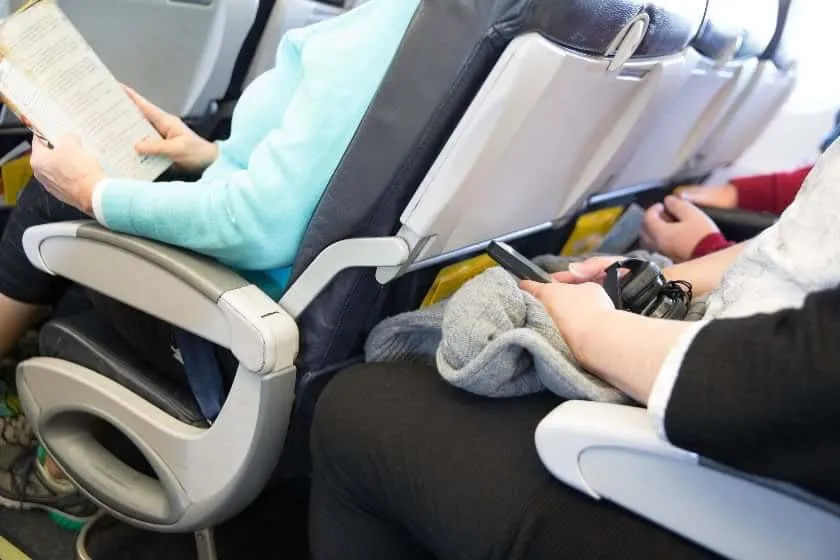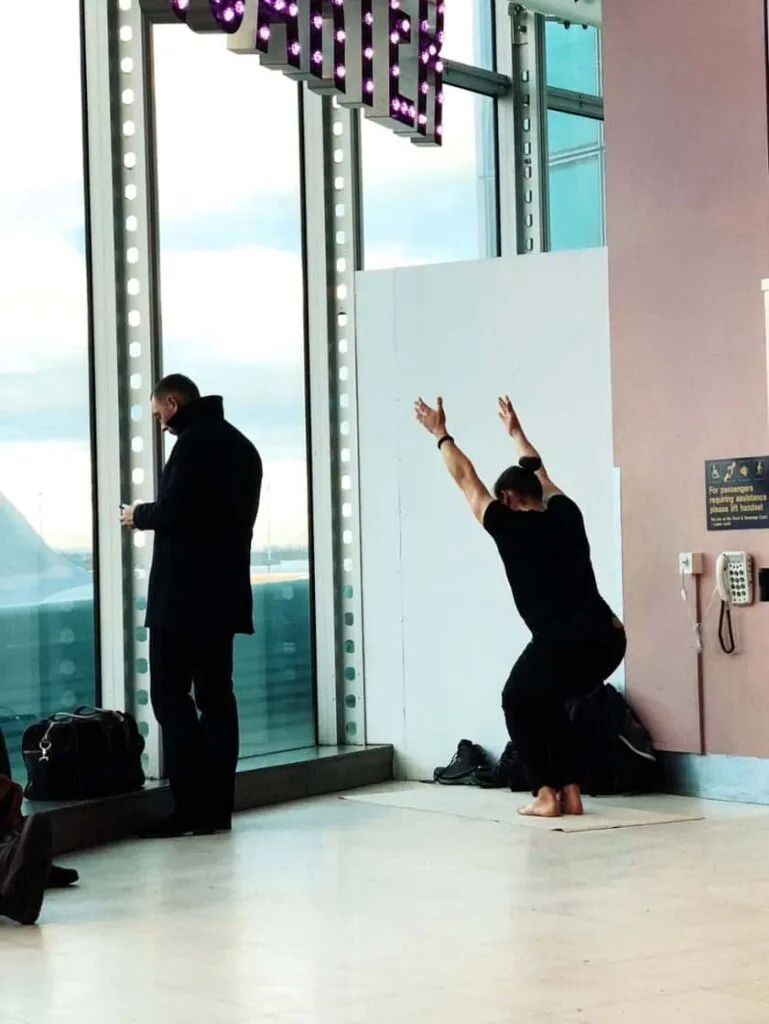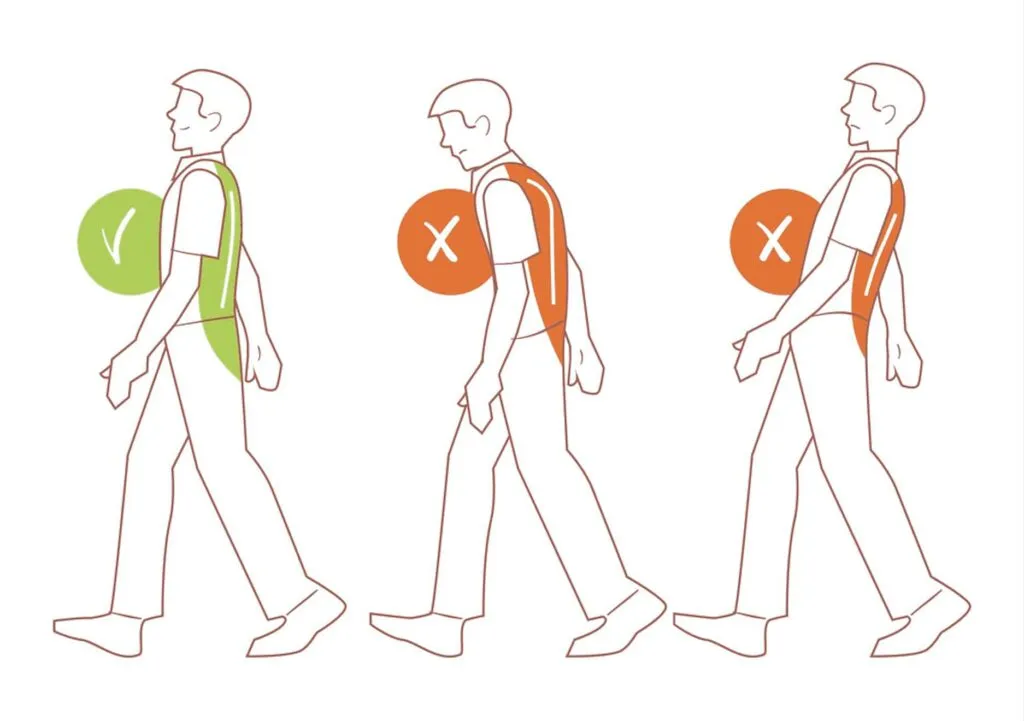You may be really excited about jetting off on holiday, but sitting for extended periods of time on long-haul flights can have negative implications for our health. It’s important to take a break from binge-watching movies and keep active on board, says health professional Jane Simon.
Long-haul flights can take their toll on your body. Factors such as dehydration, prolonged periods of sitting down and rapid travel through varying time zones can leave us feeling less than our best. ‘We are all advised to keep as active as possible in our daily lives no matter our age or ability,’ says Jane Simon, an Occupational Therapist based in the UK. ‘So it’s no surprise that sitting in one position for many hours on a long-haul flight isn’t good for us and can lead to swelling, especially in the legs, stiffness and discomfort.’
When you’re sat upright and not regularly moving over a long period of time, muscles can become tense and stiff, fluid may collect around your feet causing swelling, blood circulation may decrease and there are studies indicating that long periods of inactivity can lead to blood pooling in the deep veins of the legs, increasing the risk of Deep Vein Thrombosis.
This effect is compounded by dehydration and the reduction of available oxygen in a pressurised cabin,’ says Jane. ‘Muscle contraction keeps blood flowing through the veins, so carrying out some simple exercises frequently as well as standing up and moving around as often as possible helps to minimise the risks of long-haul flights by improving blood circulation and stretching muscle groups and joints.
The possible side effects of long-haul flights are different for everyone of course, and are heavily dependent on your personal situation and health. Before any travel, it’s always a good idea to seek expert medical advice about how to stay healthy on the move.

First of all, what is Deep Vein Thrombosis (DVT)?
There’s lots of chatter about Deep Vein Thrombosis, but what is it? DVT is a condition where a blood clot develops in a deep vein, usually in the calf or thigh. Pain, swelling and tenderness are usually associated symptoms, although often people don’t realise they have a clot. It has long been thought that distance travel could increase the risk of DVT, and a study from the World Health Organisation confirmed the risk is higher than normal for travellers who remain seated and immobile on journeys of more than four hours due to a stagnation and pooling of blood in the veins, which can potentially clot. Although the study didn’t investigate preventative measures, it recognises that exercising the calf muscles and ankles with up and down movements can encourage blood flow in the calf muscle veins and may help to reduce blood stagnation.
Remember – we’re not the medical experts and are just passing on well-known information, so always speak to your doctor or a medical professional if you have any concerns ahead of travelling.
Move as much as you can!
In order to fight those feelings of stiffness and fatigue from hours of sitting down, we’ve got some tips and easy exercises to do before you fly and on board that may help for long-haul flights.
When you’re sat upright and not regularly moving over a long period of time, muscles can become tense and stiff, fluid may collect around your feet causing swelling
Before your flight and during any stopovers, make the most of the airport terminal space and stretch your legs by walking around and staying on your feet. Some airports even have spaces designed to help you stretch and move before flying. San Francisco Airport and LAX Airport for example have two yoga rooms where travellers can stretch and meditate before their flight, with the latter also offering complimentary mats, exercise balls and stretch bands to use, as well as 20-minute instructional videos. There are many other airports around the world that offer yoga spaces, so check-out your airport online before you fly to see what’s available. Some airports even have gyms that you can pay one-off fees to use pre-flight, while Phoenix Sky Harbor International Airport has the the ‘Sky Harbor Fitness Trail’ between Gates A30 and D8 where you can stretch your legs and see local sights.
During your flight (and only when safe to do so and the seatbelt sign is off), remember to slowly walk around the cabin as much as possible. A few laps to the toilets and back can really help get things moving again and increase your blood flow.

7 exercises to do on board a long-haul flight
Keep your blood moving on board with some simple in-seat aeroplane exercises and stretches. However, don’t do anything that causes pain or that can’t be done with ease, and always seeks advice from a medical professional before trying anything new. ‘Simple exercises can be adapted to any person’s ability, but if a movement causes discomfort then stop,’ advises Jane.
‘Repeat exercises regularly, if possible every 30 minutes or so, as well as mixing it up with getting out of your seat and walking around the cabin. As well as stretching movements, isometric exercises can also help relieve tense or sore muscles on a long flight. This involves squeezing muscle groups, for example buttocks and legs, holding for a count of 10 and then relaxing.
‘Neck stretches, arm stretches and back stretches are all a good idea too, and I’d advise to use a pillow in the small of your back to provide some extra support. Remember, don’t cross your legs as this further restricts blood flow,’ advises Jane.
1. Ankle circles
While in your seat (and being careful not to kick the chair of the person in front!) raise your legs, one at a time, and circle your feet from your ankle, first clockwise and then anticlockwise. Do 10 full rotations on each foot.
2. Foot pump
With your heels on the floor, raise your toes upwards as far as you can stretch. Then put both feet back on the floor and lift your heels as high as you can, with the balls of your feet on the floor. You should feel the stretch through your feet and lower legs. Repeat 10 times on each foot.
3. Knee lift
From sitting position and with your knees bent, slowly and gently lift your knees upwards towards you, one leg at a time. Repeat 10 times on each leg.
4. Knee hug
Bend forward slightly and clasp your knee, lifting your leg up and hugging it towards your chest. Hold it there for 10-15 seconds then release. Repeat on your other leg.
5. Neck roll
Keeping your shoulders relaxed, drop your ear towards your shoulder, then gently roll your head from side to side, at least 10 times on each side.
6. Shoulder roll
Create gentle circular movements for your shoulders to stretch, by first hunching them forward, then moving them upward, backward, and downward. Repeat at least 10 times.
7. Forward bend
With your feet on the floor, slowly bend forward – if it’s possible, ease your chest to touch your thighs. Then to extend the stretch, slowly walk your hands down the front of your legs. Hold for 10-15 seconds and slowly ease yourself back up, then stretch back upwards to accentuate the lumbar curve.
8. Go For A Walk (Recently Added)
When you see the aisles are clear, try going for a walk. Get out of your seat and walk from one side of the plane, down the aisle all the way to the end. Then come back. Practice mindful breathing, with a correct upright posture with your shoulders back. You may also want to try variations of walking with high knee raises and lunge walks.

Remember, these are only suggestions of exercises and stretches to keep you moving on a long-haul flight, and it’s always recommended that you speak to a medical professional about your particular situation before you travel. Plus, if you’re after some tips on beating the dreaded jet lag, we’ve got just the article for you.
Before you hop on your next long-haul flight, make sure you pack a few essentials, like your favorite chic jewelry to keep your style on point, even while traveling.

